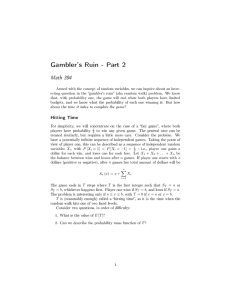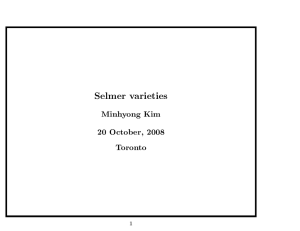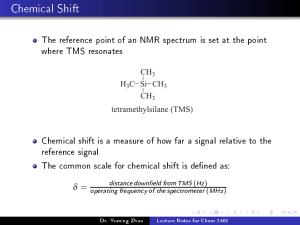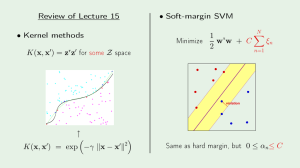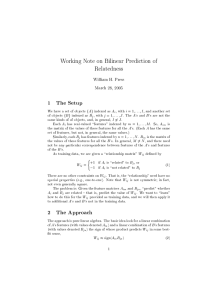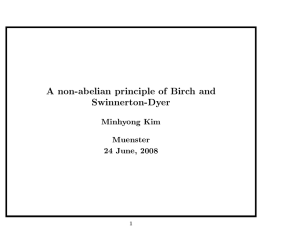н жщ кыт ж п г × жз ь ср
advertisement
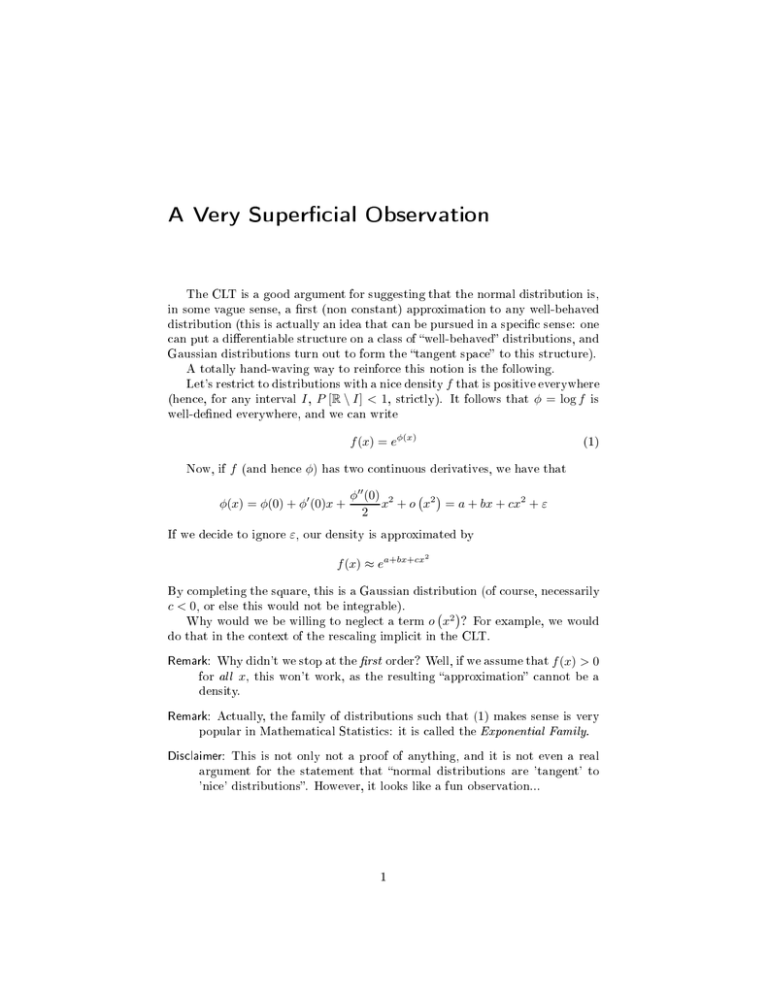
A Very Superial Observation The CLT is a good argument for suggesting that the normal distribution is, in some vague sense, a rst (non onstant) approximation to any well-behaved distribution (this is atually an idea that an be pursued in a spei sense: one an put a dierentiable struture on a lass of well-behaved distributions, and Gaussian distributions turn out to form the tangent spae to this struture). A totally hand-waving way to reinfore this notion is the following. Let's restrit to distributions with a nie density (hene, for any interval I , P [R \ I] < 1, f that is positive everywhere stritly). It follows that φ = log f is well-dened everywhere, and we an write f (x) = eφ(x) Now, if f (and hene φ) has two ontinuous derivatives, we have that φ(x) = φ(0) + φ′ (0)x + If we deide to ignore ε, (1) φ′′ (0) 2 x + o x2 = a + bx + cx2 + ε 2 our density is approximated by f (x) ≈ ea+bx+cx 2 By ompleting the square, this is a Gaussian distribution (of ourse, neessarily c < 0, or else this would not be integrable). Why would we be willing to neglet a term o x2 ? For example, we would do that in the ontext of the resaling impliit in the CLT. Remark: for Why didn't we stop at the all x, rst order? Well, if we assume that f (x) > 0 this won't work, as the resulting approximation annot be a density. Remark: Atually, the family of distributions suh that (1) makes sense is very popular in Mathematial Statistis: it is alled the Dislaimer: Exponential Family. This is not only not a proof of anything, and it is not even a real argument for the statement that normal distributions are 'tangent' to 'nie' distributions. However, it looks like a fun observation... 1

